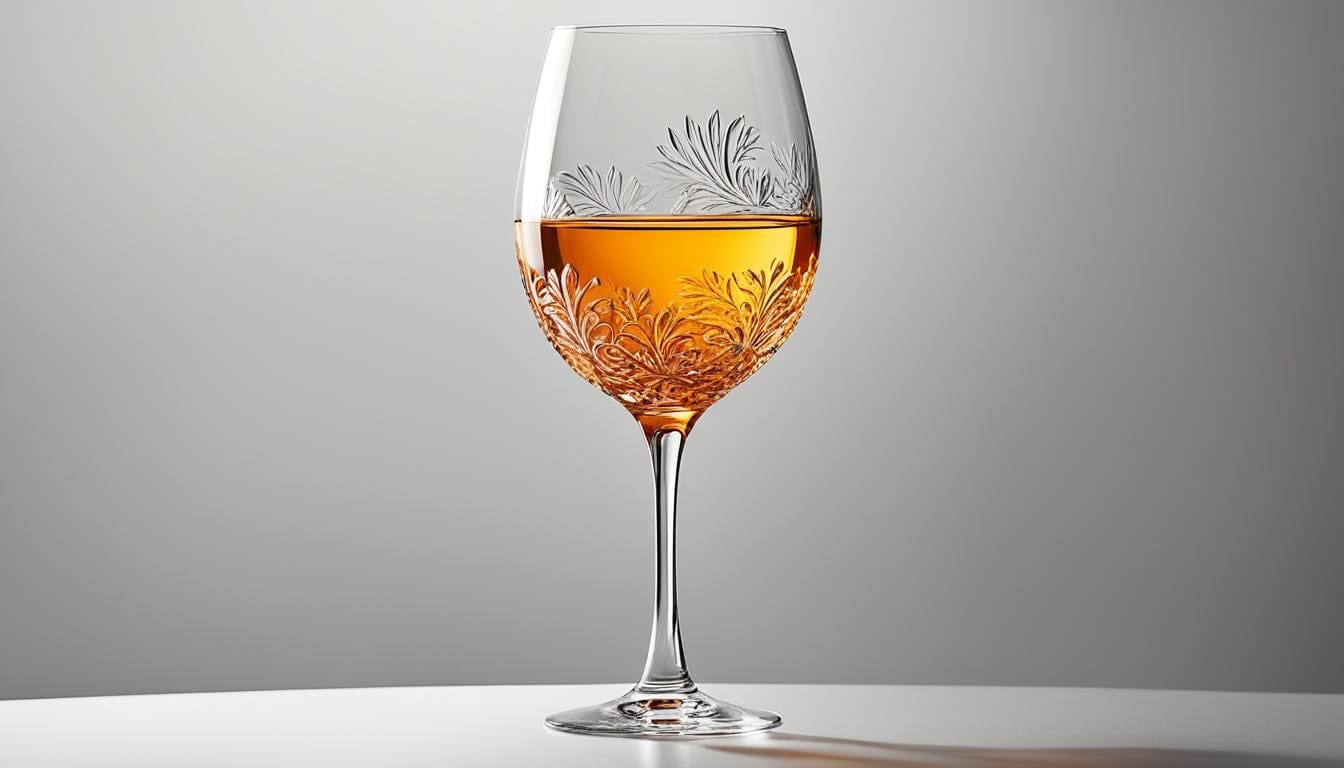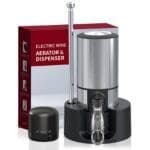This post may contain affiliate links. Please read my disclosure policy.
Ever heard of orange wine? It’s the sophisticated beverage that’s turning heads in Australia and beyond. Unlike its citrusy name suggests, this unique drop isn’t made from oranges. Instead, it gets its name from the distinct amber hue it develops through extended skin-contact during wine fermentation.
With deep roots stretching back to ancient winemaking regions like Georgia and Italy, orange wine is a nod to tradition and a testament to sustainable winemaking techniques. Its intriguing flavour profile has caught the fancy of oenophiles all over, keen on exploring wine’s historical charms and diverse tastes.
As this historical elixir enjoys a renaissance among modern connoisseurs, it’s time for you to delve into the world of skin-contact wines and discover why your next glass should be orange. So, pull up a chair and let’s raise a toast to the past, the present, and the future of this unique sip of elegance!
What is Orange Wine?
As the allure of natural wine takes centre stage in the world of viticulture, a particular style has begun to shimmer with renewed splendour — the enigmatic orange wine. Misunderstood by some as a fruit wine, its moniker actually arises from the vibrant hue achieved through an exquisite dance between white grape skins and juice. This alternative winemaking method has not only captured the curiosity of oenophiles but also marked a shift towards more organic winemaking practices across the globe.
The Definition and Misconceptions
Perhaps better referred to as ‘skin-contact wine’, orange wine boasts a production method that sets it apart from its red and white cousins. Here, winemakers allow the skins of white grapes to remain in contact with the juice for extended periods, resulting in a wine that defies expectations with its depth and character — a true departure from conventional winemaking techniques.
Once shrouded in misconception, the clarity of what defines an orange wine is now illuminating the industry, celebrating its rightful place amidst the pantheon of fine wines.
Historical Roots and Contemporary Revival
The art of making orange wine is not a newfangled trend but rather a resurrected narrative from over 5,000 years ago, deeply rooted in Georgian and Italian winemaking traditions. These regions are credited with preserving a heritage that champions the raw, unadulterated expression of the grape. In today’s revival, a growing cadre of vintners worldwide is breathing life into these time-honoured practices.
Through a conscious return to biodynamic and organic viticulture, they are shaping an industry that’s increasingly embracing alternative winemaking techniques. The renaissance of orange wine is a testament to the enduring appeal of what’s natural and untainted, beckoning both newcomers and connoisseurs to explore and revel in its mosaic of taste and tradition.
The Making of Orange Wine
The artistry behind orange wine is a tapestry of old-world charm and new-age finesse. Its production begins in vineyards, where the meticulous selection and harvesting of white grapes lay the foundation for a wine that challenges the palate with its unique character. Oenophiles and novices alike are drawn to this wine’s distinct narrative, one that’s told through its ancient wine production methods combined with innovative wine fermentation techniques.
Traditional Techniques Meet Modern Practices
Envision the gentle crushing of ripe grapes, releasing the essence of terroir that has been nurtured by Mother Nature’s tender hand. This first step signals the start of a captivating journey, where each grape, each vine speaks of a heritage deeply rooted in the earth. Orange wine producers employ methods that have stood the test of time yet embrace the advancements of modern winemaking, believing that tradition and evolution can coexist in harmony. From the use of classic vessels like terracotta pots and imposing wooden vats to incorporating the technology that ensures precision at every stage, orange wine is a testament to the convergence of history and progress.
The Role of Skin Contact in Winemaking
Lending orange wine its emblematic color and complexity is the technique of skin-contact fermentation. In this phase, the crushed grapes are left to macerate with their skins, allowing the tannins and pigments to mingle with the fermenting juice. This interaction not only bestows the wine with its vibrant hue and full-bodied texture but it also elevates the flavor profile, creating a symphony of robust, tantalizing notes. Far from being a mere step in the process, the practice of skin contact is a philosophy, one that respects the intrinsic properties of the grape and unlocks the potential contained within its skin.
Winemakers safeguard this tradition by fostering the cultivation of natural yeasts, allowing them to transform sugar into alcohol naturally. The magic unravels in the belly of amphorae and Kvevri, where the wine’s identity is shaped, embodying the perfect marriage between the lightness of white wines and the depth of reds. It’s this artisanal approach to skin-contact wine that forges its unique path in the mosaic of wine production methods.
As you sip on a glass of orange wine, remember the land, the hands, and the legacy woven into each drop. Its creation is not merely an act of fermentation but rather a cultural rite, celebrating the sensorial beauty that comes from respecting the symbiosis between tradition and modernity.
Orange Wine’s Global Journey
The allure of orange wine has its roots deeply embedded in the fertile soils of Georgia, where the use of traditional methods like fermenting in Kvevri has been a cornerstone of Georgian wine production for millennia. This bastion of viniculture has bequeathed an invaluable legacy, gifting the world with an approach to natural wine that resonates with purity and history.
From Ancient Georgia to Modern Australia
As the Georgian legacy traverses the oceans, Australia’s embrace of this ancient craft signals the dawn of a new era. Here, amidst the sun-drenched vineyards of the Australian wine regions, a contemporary chapter is being written. Drawing inspiration from across the seas, Australian vintners have begun to weave their own narrative into the fabric of orange wine tradition, melding native varietals like Sauvignon Blanc with age-old techniques.
Worldwide Wine Regions Embracing Orange Wine
From the picturesque landscapes of Italy to the terraced vineyards of Slovenia, and on to the innovative hubs in the USA and Canada, the march of orange wine is irrefutable. This global journey has not only resurrected ancient practices but has also inspired a new wave of orange wine tours, igniting a passion in oenophiles eager to experience the nuances of this once-forgotten style. As each region pours its heart into every glass, they collectively embellish the story of orange wine — a style unbound by time, thriving in diversity and connection.
The Spectrum of Orange Wine Shades
Oenophiles across Australia are raising their glasses to the fascinating world of orange wine, where each bottle poured reveals a symphony of colours mirroring the artful touch behind its creation. The spectrum is not solely a visual delight but a prelude to the richness within—a vivid testament to the traditional wine production methods employed in crafting these unique blends.
Grapes, method, and time convene in the making of skin-contact wine, orchestrating the transition from a mere white grape to the illustrious shades that characterise orange wine. It’s a narrative of hue, where every pigment variation speaks volumes of the wine’s journey from vine to glass.
Interpreting the Colours: From Amber to Russet
The seemingly simple act of allowing skins to linger with the grape juice unveils a kaleidoscope ranging from the understated amber to a profound russet. The lengthier the skins are left to bathe, the more profound the infusion, offering a bolder statement both in tint and in flavour. It’s a delightful quandary for enthusiasts to ponder the depths of shades—a pause that often piques curiosity and entices the palate.
Each hue encapsulates a story: the bright freshness of an early harvest; the richness of a long maceration; the endless subtleties in between. Like an artist’s palette, the colours of orange wine meld and blend, offering a unique shade for every connoisseur to explore and appreciate.
The bespoke nature of each bottle of skin-contact wine makes it not just a drink, but a conversation piece, an exhibit of fine craftsmanship where each sip reveals more of its variegated narrative.
Profile of an Unconventional Elixir
Embarking on the journey to uncover the complexities of orange wine leads us to a realm where the traditional boundaries between red and white wines blur. This elixir, steeped in anachronistic winemaking techniques, epitomises the essence of natural wine, a toast to the purest expression of the vineyard.
Daring and nonconformist, orange wine defies the ordinary with a flavour profile that beckons the curious sipper. It’s a beverage that’s not afraid to flaunt its tannic structure, likened to a well-woven fabric, intricate and textural.
Flavour Characteristics and Texture Explained
The decadence that is the flavour profile of orange wine is a harmonious symphony of contrasts. Imagine the tartness of bruised apple intertwined with undertones of rich walnuts, both playing off a background hint of noble bitterness. It’s a chorus of notes serenading the palate with an earthy and robust score, peculiar to wines with such a generous period of skin contact.
What truly sets orange wine apart is its profound texture – a sensation that dances between the velvety grasp of a red and the refreshing zing of a white. Capturing this spectrum of tactile delight is a testament to the painstakingly nurtured tannic structure honed during the winemaking process. Picture the dried fruits of autumn, dusted with earthy, floral whispers, encapsulating the untamed soul of its origin.
The inherent beauty of orange wine lies in its diversity. Each bottle, a reflection of the grape, the terrain, and the individual philosophy of the winemaker, verifies that no two sips of this natural wine are ever wholly alike—a narrative of taste that boldly flips the script on the traditional wine narrative.
Culinary Companions for Orange Wine
Orange wine, with its suite of complex flavours and rich textures, offers a plethora of culinary pairings that accentuate and complement its character. Renowned for its structured complexity, a bottle of this unique wine aligns perfectly with a gastronomic adventure that explores diverse cuisines and tantalises the tastebuds with unconventional taste pairings.
Pairing Food with Orange Wine’s Complex Profile
Its pronounced acidity and substantial tannic underpinning make orange wine an excellent match for hearty, flavour-intensive dishes. It can cut through the richness of cream-based sauces, while also harmonising with the intricate spice layers found in a myriad of ethnic dishes. The beauty of orange wine shines when it’s paired thoughtfully, bringing forth a symphony of tastes that both contrast and echo the intricacies of the wine.

The Versatility in Diverse Cuisines
One cannot overstate the adaptability of orange wine within the sphere of diverse cuisines. Its unique ability to pair with the fiery kick of a Korean barbecue, the exotic tartness of Ethiopian injera, or the delicate umami of a Japanese broth is unparalleled in the world of wines. For those who lean towards sustainability, the earth-friendly principles of sustainable winemaking that often guide the production of orange wines can be an added allure, promising purity and environmental respect in every glass.
In the diverse culinary landscape of Australia, where tastes from around the globe are celebrated, orange wine emerges as a mindful choice for dinner parties and fine dining experiences alike. It’s the wine that begs to be savoured with an array of dishes, welcoming aficionados to explore and discover perfect pairings across a variety of culinary traditions.
The Tannic Tapestry of Orange Wine
Embark on a sensory pilgrimage into the world of orange wine, where the fusion of traditional wine fermentation and skin-contact techniques weaves a remarkable tannic structure. The pronounced phenolic texture within these wines stands testament to their meticulously managed production processes. A hallmark of distinction, the extended contact with grape skins confers not just a charismatic amber hue but also a depth and complexity akin to the finest tapestries.
Skin-contact wine, a term that encapsulates the timeless method responsible for the tannic presence in orange wine, is deftly entwined with the modern palate’s desire for enriched taste profiles. The selective permeation of tannins during skin maceration gifts these unconventional wines a textured landscape that is as intriguing to the connoisseur as it is to the casual sipper.
Understanding the Tannins and Phenolic Structure
The inherent structure of orange wine is a direct emanation of the tannins and phenols derived from its unique process of wine fermentation. It is these very compounds that shape and refine the wine’s character, offering a robust matrix that captivates the palate. Through the art of patient maceration, an expressively bold, yet balanced, profile emerges; one that harmonises with the natural qualities of the grape, steering the wine’s identity towards an illustrious phenolic tapestry.
Inviting an appreciation for its authentic craftsmanship, the carefully cultivated tannic structure provides not only an olfactory indulgence but also a tactile experience. Much like the astringency sensed in a freshly brewed cup of tea, an orange wine’s tannic texture exhibits a similar drying sensation that is both refreshing and thought-provoking, elevating the drinking experience to one of pure sensory delight.
The appreciation for orange wine’s tannic tapestry stretches across Australia, delighting enthusiasts who have come to value not only the taste but the profound texture that each sip presents. Its rise in popularity is a note-worthy ode to the artful balance between ancient methods and contemporary tastes. Indeed, the virtuosity of orange wine is a contemporary chronicle, festooned with a palette of textures and tastes that dares to be explored.
Harvest to Glass: The Lifecycle of Orange Wine
The beguiling journey of orange wine faucets into the artisanal vein of wine production methods, orchestrated with a homage to nature. As we delve from the sun-dappled vineyards to the glass brimming with warmth, the orange wine narrative unfolds—one that’s richly woven with the tenets of both natural wine and sustainable winemaking. The first act commences with the harvesting of grapes; it’s a time when vintners, with their shears and baskets, tread softly amongst the vines, selecting grapes at the peak of their maturity.
Next enters the stage of skin contact—a pivotal scene that sets orange wine apart. The grape skins bathe in their juice, a process varying in duration, each minute adding a new depth to the wine’s persona. It’s here that we witness the transformation—a metamorphosis bestow by the wild native yeasts, serendipitously found on the grape’s skin and within the winery, driving the fermentation within their chosen abode, be it a sleek stainless steel or a dignified Kvevri, the latter standing as a relic of ancient craftsmanship.
‘In vino veritas’—in wine, there is truth. The absence of modern additives in the creation of orange wine unshackles the purity of flavour, laying bare the intrinsic qualities of the grape and the whisperings of the region’s terroir.
The finale of the lifecycle—the ageing—sings a different tune with each winemaker’s score. Some let the wine bask in its own glory, reaching depths of character through extended ageing, while others choose the vibrancy of youth, bottling it promptly. This delicate interplay of time and technique crafts a libation that’s not only a drink but a story—as timeless as nature itself.
A Toast to Sustainable Winemaking
Raising a glass to sustainable winemaking practices, the world of orange wine stands as a testament to the art of producing exquisite beverages that are in harmony with nature. This nod to sustainability is capturing the hearts of wine lovers across Australia, celebrating organic winemaking traditions that not only honour the past but also protect our future. Through methods that emphasise natural processes and minimal intervention, winemakers are crafting orange wines that are a true expression of the land.
Natural and Minimal-Intervention Techniques
In vignettes that echo through vineyards, the dedication to natural wine production involves a back-to-basics approach. Carefully chosen indigenous yeasts come to the fore, paving the way for fermentation and aging processes that rely less on modern gadgets and more on time-tested wisdom. It’s in these details that orange wine tours provide enthusiasts with an immersive experience, revealing how the intricate dance between time-honoured vessels like amphorae and the earth’s own rhythms result in wines of unparalleled character.
By favouring a path less travelled, these vintners not only engage in sustainable winemaking, but they also craft narratives in every bottle—a narrative that doesn’t start and end with the wine itself but extends to the very ethos of its creation. This philosophy resonates deeply within the winemaking community and beyond, championing an approach to viticulture that ensures the legacy of our lands will be enjoyed for generations to come.
Herein lies more than just a wine; it is a harmonious philosophy that calls for a deeper respect for our environment, encapsulated in every sip of natural, sustainable, and organically produced orange wine. It is a cause worth toasting to, not just in Australia but around the world.
Charting the Renaissance of Orange Wine
The journey that orange wine has embarked upon is nothing short of inspiring, marking a significant chapter in the annals of viticulture. What was once a curious whisper among alternative winemaking techniques, has blossomed into a resonant chorus, singing the praises of the amber-hued skin-contact wine. This revival – or rather, an orange wine renaissance – is an homage to the craft’s ancient past, as it waltzes with the trends of today’s sustainability-minded palette.
Orange wine’s ascendancy signifies more than just a shift in consumer trends or market dynamics. It echoes a profound call back to the roots, to the fundamental essence of winemaking that trusts nature’s course and honours the grape’s natural metamorphosis. With every sip, aficionados and neophytes alike celebrate history, indulging in a wine that transcends time yet speaks a contemporary tongue.
The New Appreciation for Ancient Winemaking
As we embrace the renaissance of orange wine, we bear witness to a collective nod towards the enduring nobility of winemaking traditions. Extended skin contact- the cornerstone of orange wine- has rekindled an interest in varieties and practices that have been overshadowed in favour of more modern, perhaps more predictable, processes. It is a rediscovery of the ancestral vessels and the unadulterated techniques which allow the wine to tell its own story, untouched by industrial modernity.
The footprint of the past skillfully steps into the future, as the lively interest in orange wine expands to every corner of the globe. Not only does this mark a significant moment for cottage industries and artisan vintners, but it also exemplifies a broader shift to embrace alternative winemaking techniques resonant with nature’s rhythms. It’s a movement that sees the value in every nuance and every note, seeking pleasure in the purity of the craft. Orange wine, thus, stands proudly as a testament to a practice that honours authenticity and sustainability, weaving together the narrative of winemaking’s storied history and its vibrant, burgeoning future.
A Guide to Tasting Orange Wine
Delving into the world of orange wine is to embark on a captivating journey of the senses, one defined by both tradition and a bold defiance of wine norms. It’s here that one’s palate is greeted by a tapestry of flavours as intricate and inviting as the sunset hues typical of this unique vintner’s craft. Tasting orange wine is an immersive sensory experience that incites curiosity and rewards the adventurous.
Describing the Sensory Experience
The initial allure of orange wine comes from its rich, visual appeal – a spectrum of amber shades that captures the eye. These wines feature a medium-bodied profile that makes its introduction through a burst of citrus notes and progress to an orchestra of orchard fruits. Subtler undertones of aromatic herbs and exotic spices soon follow, suggesting layers beneath that wait to be explored. It’s a sensory experience that can evolve from a subtle sourness to a bitter complexity, or perhaps introduce an unexpected whisper of sweetness amongst the prevailing earthy notes. Often, a distinct nutty edge comes through, rounding out the diverse flavour attributes.
No products found.
Best Practices for Serving
The enjoyment of orange wine is maximised at an optimal wine serving temperature, striking the perfect balance to accentuate its vibrant characteristics. Ideally served at around 13 degrees Celcius or 55 degrees Fahrenheit, slightly cooler than what you would afford a red but with a warmth surpassing that of whites, the nuanced symphony of the orange wine’s profile is expressed in full. Whether it accompanies a dish that complements its robust nature or stands alone to be pondered and appreciated, orange wine is best enjoyed when one’s approach is unhurried, open, and receptive to the narrative it weaves within each sip.
Indeed, whether it’s an evening of reflection or a gathering of friends, the act of tasting orange wine is tantamount to exploring an old world newly discovered. It invites a dialogue between drinker and drink, where each bottle tells a story, and each glass compels a moment of pause. Embrace the journey; who knows what sensory revelations await?
Orange Wine: The Drink of Eccentrics and Enthusiasts
As the renaissance of orange wine unfolds, the beverage has garnered a passionate following among a particular cohort of aficionados. It’s a niche carved out by those with an insatiable curiosity for the non-traditional and a deep appreciation for the craftsmanship of alternative winemaking techniques. In the bustling wine bars of Australia’s hippest districts, you’ll find these orange wine enthusiasts animatedly discussing the unique qualities of each glass.
Who is Drinking Orange Wine?
These enthusiasts aren’t just anyone. They’re the daring souls who don’t just follow trends but set them. The orange wine movement is fuelled by their desire for artisanal products and sustainable winemaking that echoes a commitment to environmentally conscious living. They demand integrity in their glass – something that speaks of the soil, the tradition, and the innovators who dare to tread a different path. With each sip of orange wine, they’re indulging in an ancient practice reborn, one that simultaneously honours the earth and their discerning palates.
With the steadily burgeoning popularity of orange wine, it’s clear that this isn’t just a fleeting craze. It’s a lifestyle choice, a statement of individuality, and an exploration of wine’s outer edges. Behind it is a community that values authenticity and the diversity of expression that orange wines embody. Whether it’s being poured in Sydney’s latest high-end eatery or a quiet Melbourne tasting room, orange wine has become a symbol of both heritage and invention, resonating with those who seek joy in the unique tapestry of winemaking’s more elusive delights.
Is orange wine a red or white wine?
Despite its colourful name, orange wine starts life as a white wine grape. It’s the winemaking process that gives it that gorgeous glow, much like a Brit abroad turning a splendid shade of lobster.
Where does the name orange wine originate from?
The term “orange wine” is a bit of modern slang, coined by wine lovers and the chattering classes to describe its unique colour. There’s nothing citrus about it, apart from perhaps a zesty personality.
What are some interesting facts about orange wine?
• It’s the ancient method of winemaking that’s become the new black, or shall we say, the new orange, in trendy wine bars and hipster hangouts.
• This wine is like a history lesson in a glass, with origins dating back over 5,000 years in the Caucasus (modern-day Georgia), where it was fermented in large clay vessels called qvevri, buried underground like a pirate’s treasure.
Source Links
- https://www.vinomofo.com/articles/orange-wine-wine-buzzwords/
- https://beerandwine.guide/wine/what-is-orange-wine/
- https://www.wine-searcher.com/select/orange-wine
Sip smarter, subscribe now!
Subscribe for gourmet tips, event updates, travel ideas, and a free e-book on Food Pairings. Start your journey to culinary and travel excellence!















